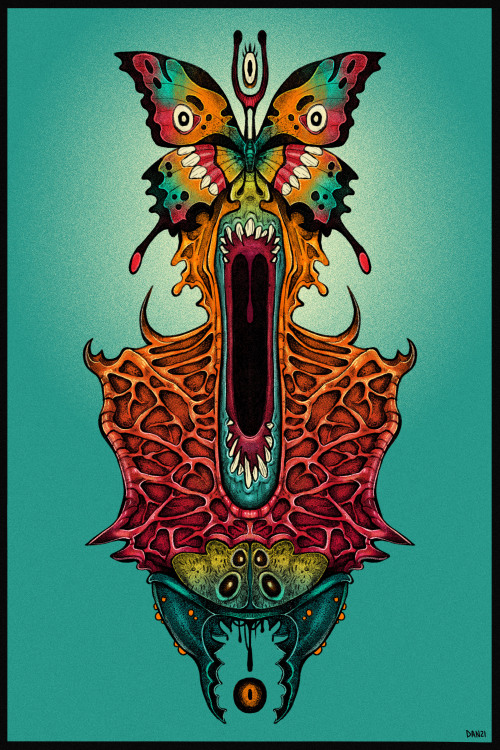#sensory sensitivity
Yes, since making this I have realized that this is probably quite off topic right now…
With no mentions of current affairs.
I’d imagine this is what sensory sensitivity looks like, feels like, sounds like. Everything beautiful is overwhelming.
Post link
PSA to folks with sensory issues who hate the Evil Scratchy Tag- get a seam ripper !! One of these guys!!

Much better than cutting the tag and still having a little pokey end of it , you can un-sew the tag from the garment!!! Be free <3
Here are some tips for autistic people who hate brushing their teeth.
Brushing teeth can be a struggle for autistic people of all ages.
When I was a kid, I hated it and lied to get out of doing it. It took me until I was around 9 or 10 years old to finally learn to brush and floss by myself, and up until that point my parents had to do it for me- often while physically restraining me (otherwise I would try to run away because I hated it).
My parents never really investigated why I hated brushing my teeth, and I didn’t have the vocabulary to articulate or identify what was so repulsive about it. So instead, I got punished for lying about it and fighting them to get away from it. That led to countless meltdowns that could have been avoided.
So, here are some tips for those of you who, like me, have issues with brushing your teeth:
- Identify sensory aversions. What are the sensory reasons why you hate brushing your teeth? Is the toothpaste too strong, too minty, a weird flavor, too smooth, or too grainy? Is the toothbrush too rough, too soft, too loud, too big, too small, too short, or too long? Do you hate the feeling of something non-edible being in your mouth?
- Identify motor skills challenges. Do you have trouble moving the toothbrush around your mouth? Do you accidentally brush too hard or too softly? Do you accidentally knock the hard part of the brush against your teeth?
- Get creative to solve for sensory and motor challenges. For example, if the toothpaste is too strongly flavored and you keep unintentionally knocking the hard part of the brush against your teeth, buy milder toothpaste (perhaps a non-mint flavored kids’ toothpaste) and purchase a brush that has a smaller head with softer bristles. If you have trouble spitting out toothpaste, buy some that doesn’t have fluoride in it so that you can swallow it.
- Make the process fun! Is there some sparkly toothpaste that looks fun to you and makes for a good visual stim? Try it out. Is there a toothbrush that has your favorite colors on it, or that includes an image related to your favorite character or a special interest? Buy it! But remember that you have to avoid sensory issues, so only buy something if you know you’ll be willing & able to use it.
- Use a timer so that you know when to stop brushing. Sometimes it helps to know what to expect, and how long you need to be brushing for. Generally speaking, it’s good to brush your teeth for around 2 minutes. There are some very stimmy liquid timersyou can buy, to make the process more fun!
- Start the process slowly. If you have severe sensory issues that can’t be controlled and you haven’t been able to find solutions, you don’t need to force yourself to endure a full 2 minutes of brushing. Maybe you can start by just brushing with water for 30 seconds. Once you’re comfortable with that, move up to 1 minute with water. Then, 2 minutes. Once you’re at 2 minutes, add a tiny bit of toothpaste. Over time, work your way up until you can handle the full amount of toothpaste for 2 minutes.
Remember that physically brushing your teeth is much more important than using toothpaste. Even if you can only use water, that’s better than not brushing at all, because it still removes plaque and food particles.
And if you really can’t handle the toothbrush itself but you’re okay with toothpaste, you can still put some toothpaste on a wet washcloth and rub it over your teeth.
Even if you can’t or won’t brush your teeth in any traditional way, make sure that you’re using some method (like a toothpick) to clean in between your teeth and remove plaque from their surfaces.
Over time, I’ve become more sensitive to the negative sensation of plaque on my teeth, which has turned teeth brushing into a positive experience. However, I sometimes still avoid using toothpaste because I find the flavor or texture too overwhelming in the moment. If I don’t use toothpaste in the morning before going somewhere, I chew on a piece of mint gum instead so that my breath doesn’t smell.
Experiment with what works best for you, and know that it’s okay if your process looks different than other people’s. Cleaning your teeth in some fashion is much better than not cleaning them at all.
~Eden

